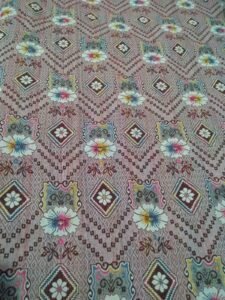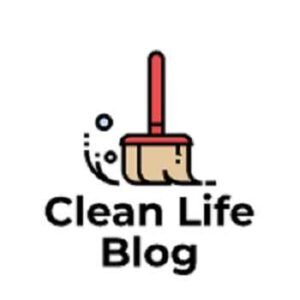Hello there! You’ve landed at the perfect place to delve profoundly into the art of fabric upkeep with Lysol. Leveraging a vast reservoir of information, I stand ready to offer you an all-encompassing, expert-backed response, thereby furnishing you with the vital data needed to make educated choices concerning fabric upkeep.
Now, the burning question: Is it safe to employ Lysol on fabric? Absolutely, yes! Nevertheless, before completely immersing yourself, carry out a trial on an inconspicuous section of the material. Always follow the guidelines on the item – a mild spray, ensuring adequate drying time, and not saturating the material can aid in averting color changes. This strategy guarantees that your fabrics remain pristine and devoid of microbes.
There is a vast universe of knowledge to explore concerning caring for fabrics with Lysol that goes beyond a surface level. Stick with us as we further probe its efficacy, utilization protocols, and several unique insights that can transform your cloth care regimen.

Can Lysol be used on fabric?
Certainly, utilizing Lysol is conducive to the fabric as long as it is handled correctly and securely. As a powerful germ-killing agent, Lysol is critical in obliterating microbes and bacteria on surfaces. It’s important to scrutinize the label carefully and adhere to the directives when utilizing Lysol to prevent any adverse effects on individuals, pets, or possible surface damage. Furthermore, initiating a patch test on an inconspicuous fabric segment before applying Lysol comprehensively is recommended to bypass potential deterioration or color alterations.
Grasping the Safety Aspects of Utilizing Lysol on Fabric
- Consider the likelihood of skin irritations or allergic manifestations, particularly if you are prone to skin ailments or allergies.
- Sport protective gloves to minimize the chance of skin reactions.
- Prevent any direct contact of Lysol with the skin.
- Peruse the product label diligently and perform a patch test before employing Lysol on any textile item.
- Lysol might be severe on fragile, absorbent, or susceptible fabrics.
- Exercise caution to prevent any material damage or change in hue.
- Lysol has a powerful scent, so use it sparingly.
The Efficiency of Lysol on Different Fabric Categories and Factors to Keep in Mind
Lysol’s interaction with fabric can differ based on the kind of material and the specific product in use. Although Lysol is generally suitable for germ elimination, some materials might exhibit greater resistance to the antimicrobial characteristics of the product.
Specific garment types might exhibit higher porosity or absorption capacity, rendering it more challenging for Lysol to infiltrate and annihilate bacteria and viruses. Additionally, some materials might be more vulnerable to the chemicals found in Lysol, which might influence its potency.
Adhering to label directions and correctly utilizing the product is essential to guarantee that Lysol functions effectively in disinfecting fabrics. Conducting a patch test on a minor, hidden section of the material might be helpful before spreading Lysol over the entire article or object.
How to Utilize Lysol on Fabric?
- Review the label: Begin by thoroughly reading the instructions on the Lysol product label. Different Lysol products may have unique guidelines for textile usage.
- Spot test: A spot test on a less noticeable area is a good idea before applying Lysol to the fabric. This helps ensure the product won’t damage or discolor the fabric.
- Prep the fabric: Remove any loose dirt or debris from the material by lightly brushing or shaking it off. This facilitates better contact between Lysol and the fabric fibers.
- Use Lysol: Apply or spray Lysol directly onto the fabric, focusing on areas needing disinfection. Be cautious not to drench the fabric as it might take longer to dry and potentially damage certain fabric types.
- Allow sufficient contact time: To ensure Lysol’s effectiveness, following the recommended contact time mentioned on the product label is crucial. This allows the disinfectant to exterminate bacteria and viruses on the fabric.
- Rinse or launder (if necessary): Depending on the specific Lysol product and fabric type, you may need to rinse or launder the fabric after the recommended contact time. This helps eliminate any residue and ensures the fabric is safe.
- Dry thoroughly: After using it, permit the material to dry completely. Proper drying prevents moisture-related issues like mold or mildew growth.
- Follow safety measures: As per advisories, individuals should wear protective gloves and avoid direct contact when using them to protect themselves. Moreover, ensuring ample air circulation in the area can prevent inhaling excessive fumes.
- Store correctly: Securely close the Lysol container post-usage and store it in a cool, dry place away from direct sunlight. This helps preserve the product’s effectiveness and shelf life.
Advantages of Utilizing Lysol for Fabric Cleansing
- Wipes out 99.9% of bacteria that induce odors and stains
- Effectively tackles tenacious stains such as grass, blood, and coffee
- Cleanses and revitalizes fabrics for a more hygienic and healthful living environment
- This spot-cleanser suits various materials, like clothes, towels, sheets, and upholstery.
- Convenient and user-friendly, with options for spraying and washing available
- Decreases the dissemination of germs and diseases in households and public spaces
- Offers enduring protection against smells and stains
- Suitable for application in high-traffic zones like fitness centers, schools, and hotels
- Cost-effective and readily available in both brick-and-mortar stores and digital platforms.
When utilizing Lysol on garments, it’s essential to let the clothing dry thoroughly before wearing them. If donned before drying, the solution might leave a residue on the clothes, possibly leading to skin irritation or fabric damage.
Note

Correct Usage and Misuse of Lysol on Textiles
Do
- Consistently scrutinize the product information and meticulously conform to the guidance when incorporating Lysol into fabric materials.
- To mitigate the risk of any potential color alteration or damage, execute a trial run on a minor, less visible cloth spot before engaging Lysol.
- Apply Lysol on materials that can withstand its inherent components, like cotton, polyester, and nylon.
- Guarantee that the cloth is utterly dried before you don or use it.
- Lysol can sterilize soft surfaces like pillows, upholstered objects, and carpets unsuitable for machine washing or laundry.
Don’t
- Steer clear of integrating Lysol on fragile materials like silk or wool, which could induce fading or damage.
- Refrain from employing Lysol on fabric materials that directly interact with your skin or food. It incorporates chemicals that may potentially irritate your skin or pollute food.
- Eschew over-utilization of Lysol on fabric materials, as it can culminate in residual accumulation, rendering the material stiff or tacky.
- Lysol shouldn’t be utilized as a fabric conditioner as it’s not designed for this and could damage the fabric.
- Avoid directly sprinkling onto the fabric material.
Practical Guidelines
- Meticulously scan the information and comply with the manufacturer’s suggested guidance.
- Before involving Lysol in the entire object, trialing it on a minor, hidden part of the textile is recommended.
- Uniformly and completely incorporate Lysol to guarantee all fabric surfaces are sterilized.
- Ensure the fabric is utterly dry before donning or using it.
- Employ Lysol on fabric when it exhibits visible dirt or has been exposed to microbes or bacteria.
- Regular incorporation of Lysol, such as once a week or as required, can assist in sustaining fabric cleanliness and freshness.
- Store it in a chilled, dry area, distant from direct sunlight.
Conclusion
Applying Lysol on fabric can be an effective and secure technique to sterilize and cleanse materials. Nevertheless, following the manufacturer’s guidelines and taking necessary precautions to avoid possible risks or damage is crucial. If there are any uncertainties or apprehensions about using Lysol on fabric, seeking advice from an expert or the product’s manufacturer is recommended.
FAQ
Does Lysol clean fabric?
Lysol can be a secret weapon in keeping fabrics clean and fresh. If someone wonders about this product’s potency on fabrics, they shouldn’t fret! A little-known tip is to employ Lysol laundry sanitizer or a suitable spray to give fabrics a deep clean beyond surface cleanliness.
Is it safe to use Lysol spray on a pillow?
Yes, an individual certainly can! However, before they embark on this, doing a small spot test is highly recommended to avoid any unforeseen mishaps. After the test, if they find everything in order, they can proceed to spray a light layer of Lysol on the pillow, keeping it at a safe distance to prevent saturation.
